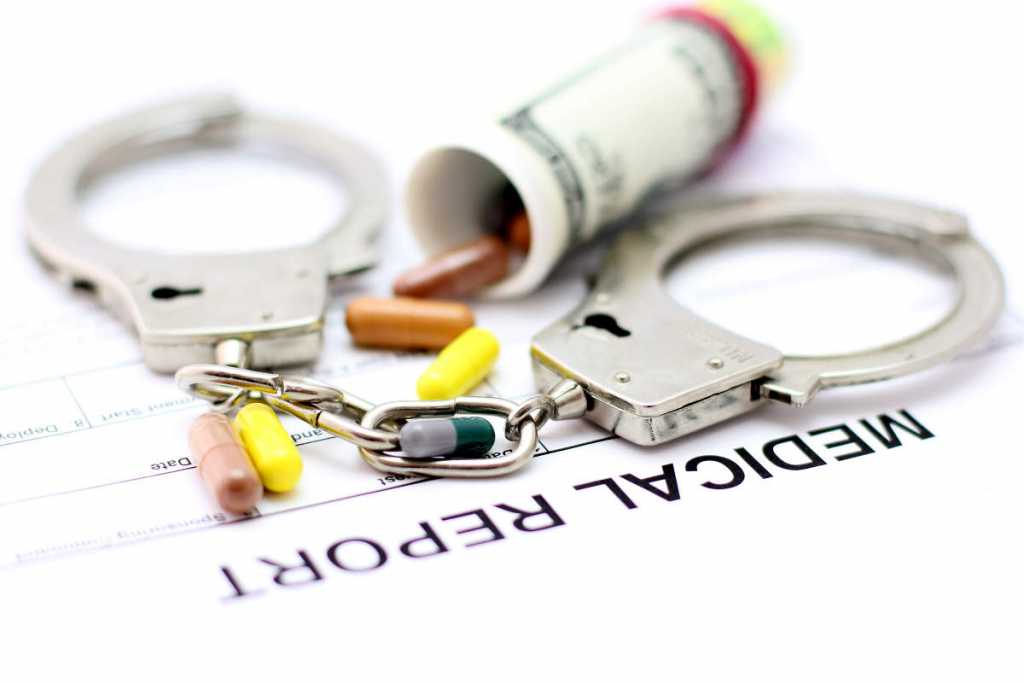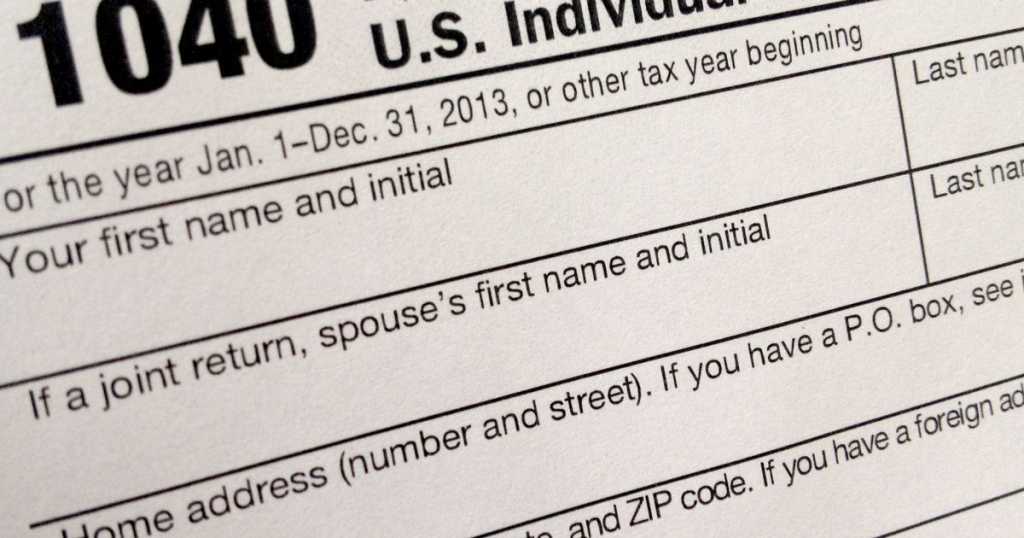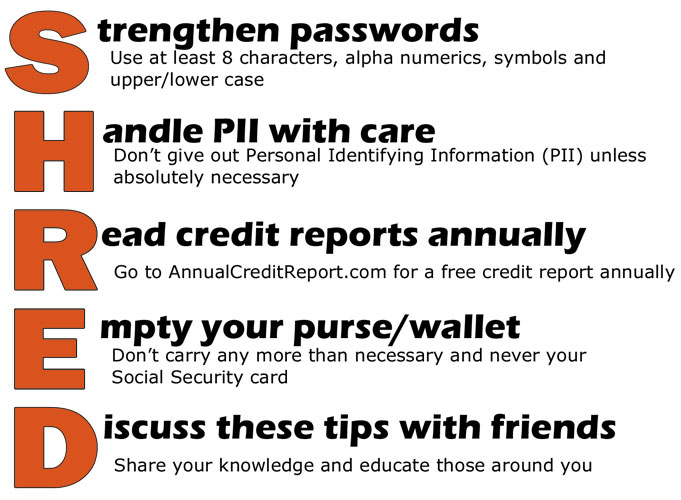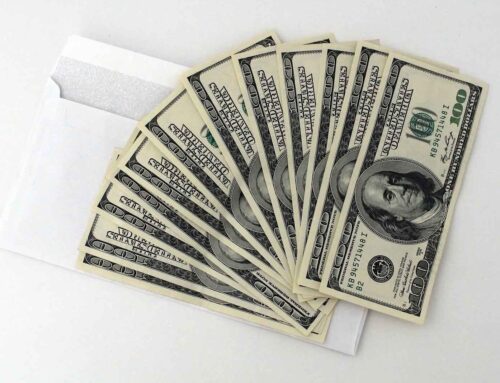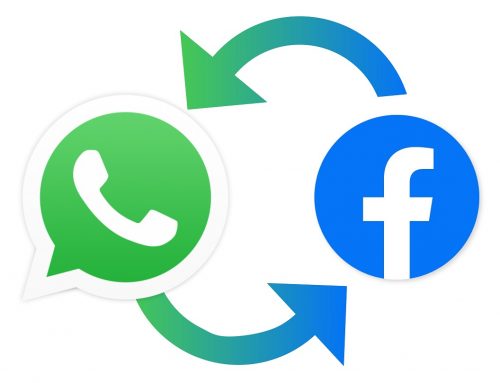Part II – Identity Theft
If you have not either heard an advertisement for Identity Theft protection; know of someone who has been a victim of Identity Theft; or heard a news program on the latest Identity Theft scandal, you are living in the proverbial cave and not bothering to read this anyway. But for the rest of us, it should be a cause for taking all the precautions we can.
What is Identity Theft? The US government defines it as follows:
- unauthorized use or attempted use of an existing account.
- unauthorized use or attempted use of personal information to open a new account.
- misuse of personal information for a fraudulent purpose.
How big a problem is this? The 2015 Identity Fraud Study, released by Javelin Strategy & Research, found that $16 billion was stolen from 12.7 million U.S. consumers in 2014, compared with $18 billion and 13.1 million victims a year earlier. There was a new identity fraud victim every two seconds in 2014. The statistics for 2015 are not available yet, but I think it is safe to say that Identity Theft represents a huge risk for all of us and we need to take every precaution we can to minimize our vulnerability to it. Know that nobody is completely safe from being victimized by Identity thieves, but there are steps you can take to lower your risk and minimize the damage if you do become a victim:
- Guard your social security number zealously. Only give it out where you know how it will be used and if the party using it will not share the information. Never put it on your checks.
- Shred or burn all your documents that have your personal information on them.
- Office supply stores have special pens that make it extremely difficult to alter the checks you write.
- Do not put outgoing mail in your mail slot or mail box for thieves to pilfer. Take the mail directly to the Postal mail box or office. Be aware of when your bills usually arrive and if they don’t show up, let the creditor know immediately. At the same time check your bank and credit card statements at least weekly for any discrepancies or unusual charges.
- Unless you initiated the call or contact, do not give out any personal information over the phone, in the mail, or over the internet.
- When choosing a password be creative and complex. Use a password of at least eight characters and include letters, numbers, and symbols. Also make some of the letters upper case. Please do not use your name, your telephone number, or something equally silly like 12345678. And do not tape the password to your computer monitor or any other obvious place.
- Purchase good firewall protection software for your computer and other electronic devices.
- Go to 888-5OPT-OUT and register yourself to stop all the unsolicited credit card applications you receive via the mail.
- Order your free annual credit reports on-line at: www.annualcreditreport.com or by calling (877) 322-8228
The last and maybe the most effective thing you can do is freeze your credit report. For a thorough look at the details of this go to http://www.consumer.ftc.gov/articles/0497-credit-freeze-faqs
This is easy to do and easy to undo when you need to obtain credit to purchase a car or get a loan. Freezing your credit report prevents anyone from using your account to open any fraudulent accounts in your name. You initiate this by contacting each of the nationwide credit reporting companies:
- Equifax — 1-800-349-9960
- Experian — 18883973742
- TransUnion — 1-888-909-8872
You’ll need to supply your name, address, date of birth, Social Security number and other personal information. Fees vary based on where you live, but commonly range from $5 to $10.
After receiving your freeze request, each credit reporting company will send you a confirmation letter containing a unique PIN (personal identification number) or password. Keep the PIN or password in a safe place. You will need it if you choose to lift the freeze.
As an aside, I recommend that you have your underage children and grandchildren do this as well to prevent them from finding out years later that they have been a victim to this for many years.
You can and should also get a free credit report annually at: www.annualcreditreport.com or by calling (877) 322-8228
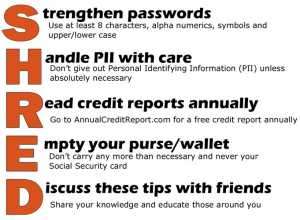 I found this acronym on the Identity Theft Resource Center web site and you might find it useful. The site itself http://www.idtheftcenter.org/Protect-yourself/id-theft-prevention-tips.html has more information and links to detailed studies.
I found this acronym on the Identity Theft Resource Center web site and you might find it useful. The site itself http://www.idtheftcenter.org/Protect-yourself/id-theft-prevention-tips.html has more information and links to detailed studies.


